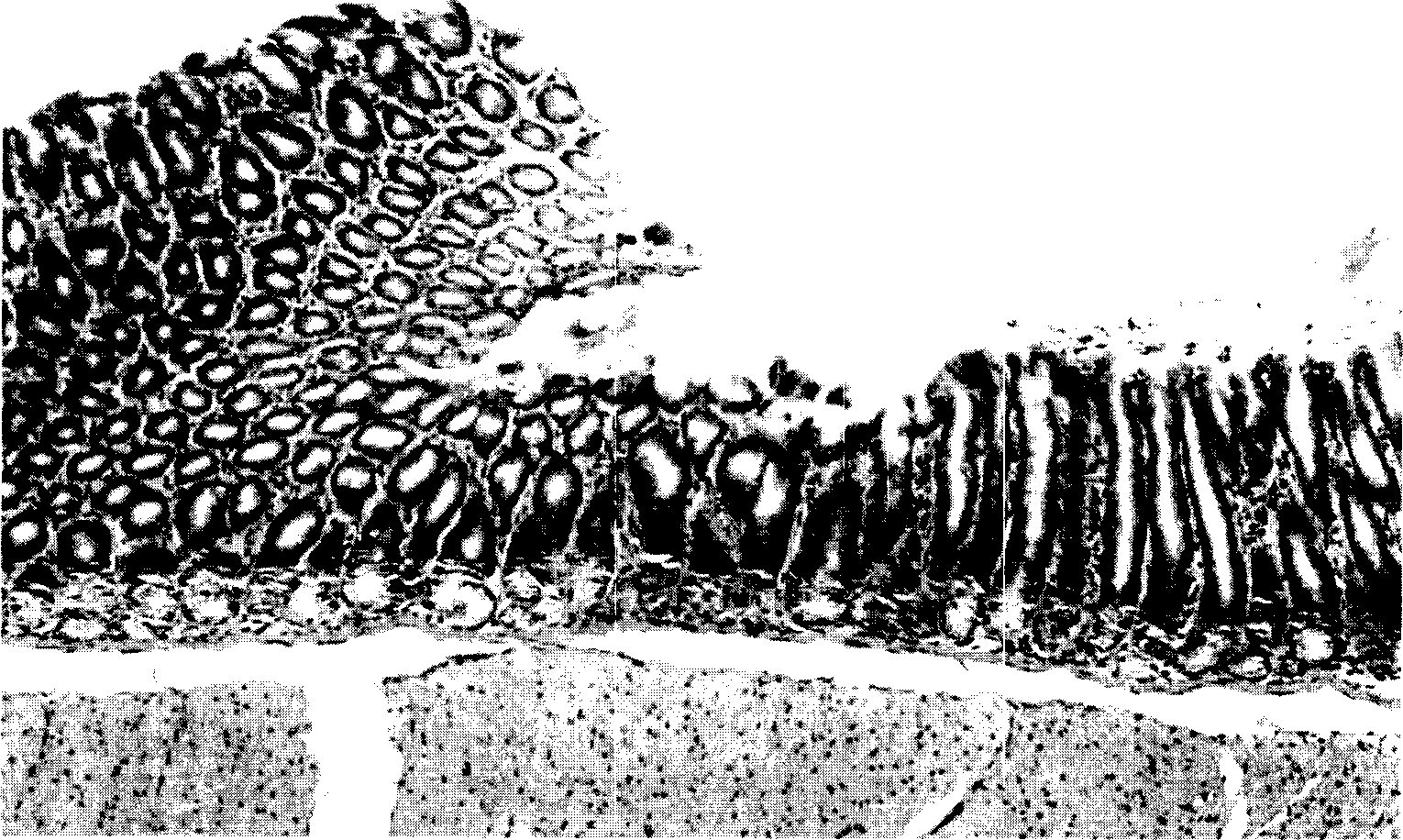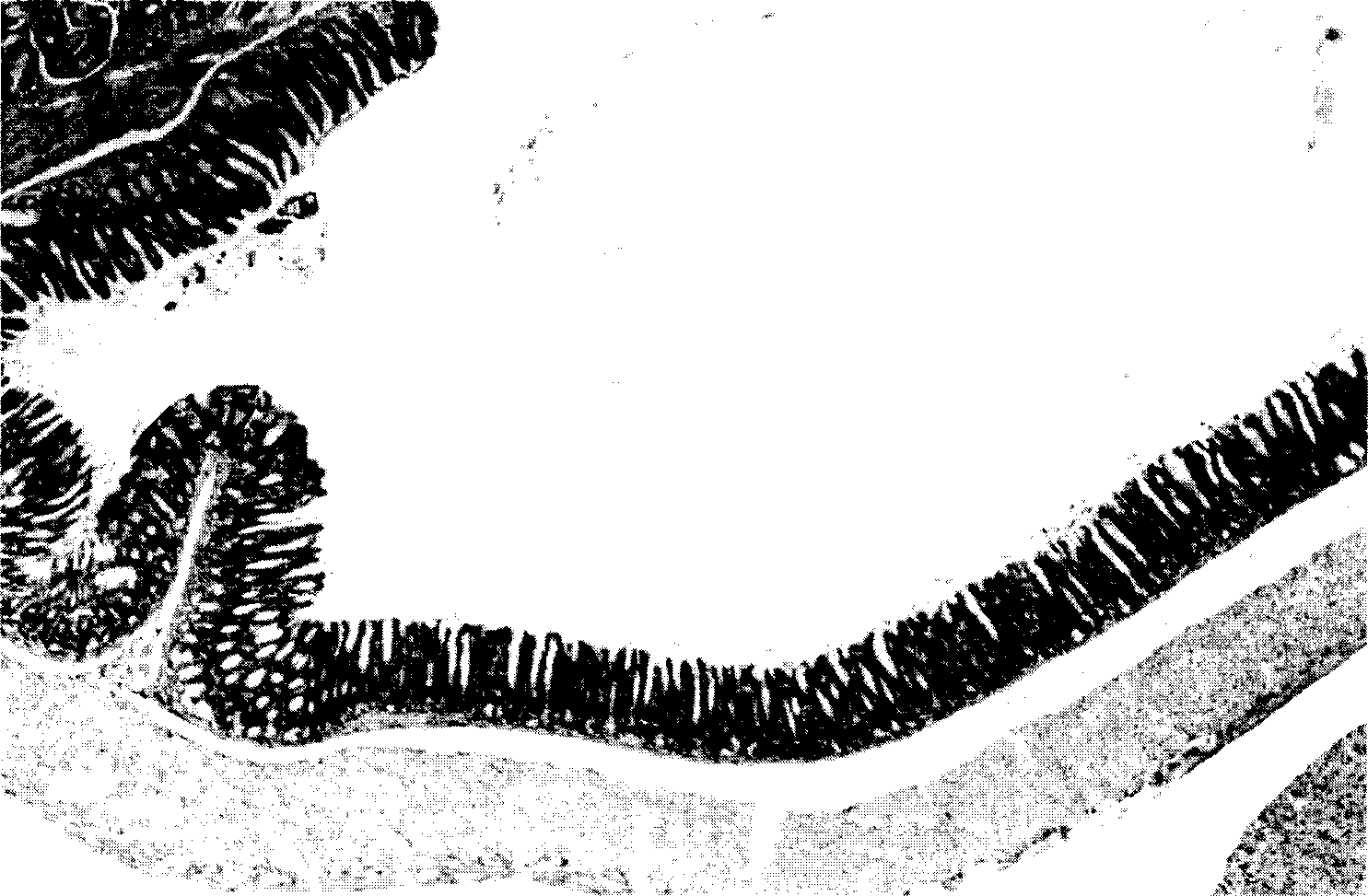Application of Psoralca corylifolia in anti-infection of helicobacter pyloric and treating relative diseases
A technology of Helicobacter pylori and psoralen, which is applied in the direction of anti-infective drugs, anti-bacterial drugs, and medical preparations containing active ingredients, to achieve the effects of rich sources, convenient use, and simple preparation process
- Summary
- Abstract
- Description
- Claims
- Application Information
AI Technical Summary
Problems solved by technology
Method used
Image
Examples
Embodiment 1
[0019] The psoralea seed powder is extracted with 95% ethanol by conventional extraction method to obtain the total extract. After the total extract was dissolved in water, it was extracted with petroleum ether and ethyl acetate respectively to obtain the petroleum ether part, ethyl acetate part and water-soluble part. The extraction rate of petroleum ether part and ethyl acetate part (fat-soluble part) is 9.0-15.0%.
Embodiment 2
[0020] Example 2 Anti-Helicobacter pylori effect in vitro
[0021] Add a certain amount of total psoralen extract and fat-soluble parts of the sample to be tested quantitatively to a certain amount of nutrient agar medium, mix well, pour into a sterile plate, and inoculate 107CFU / ml of Helicobacter pylori in logarithmic growth bacilli. After 5 days of microaerobic culture, they were transferred to drug-free medium by blind scraping, and microaerobic cultured at 37°C for 4-5 days. The growth of Helicobacter pylori was observed, and the minimum bactericidal concentrations (Minimum Bactericidal Concentrations, MBCs) were measured.
[0022] Table 1 Anti-Helicobacter pylori (Hp) effect of total psoralen extract and fat-soluble fraction in vitro
[0023] Minimum bactericidal concentrations (MBCs) for different Hp strains (μg / mL)
[0024] sample
[0025] Hp-Sydney strain 1(Hp, SS1) Hp-F44 Hp-Hudong
[0026] Positive control (metronidazole) 1.0 ...
Embodiment 3
[0030] Example 3 Pharmacological test in mice
[0031] Level 2 C 57 Fifty BL / 6 mice, weighing 20-25 g, were fed with a certain concentration of Helicobacter pylori (HpSS1) to achieve Hp colonization in the body. Mice colonized with Hp were randomly divided into blank control group, positive drug control group, high-dose group (600 mg / kg), middle-dose group (400 mg / kg) and low-dose group (200 mg / kg) of fat-soluble part of psoralen. Five groups, 10 in each group. The positive control group used triple therapy currently used in western medicine: omeprazole 5.2 mg / kg, clarithromycin 65 mg / kg and metronidazole 104 mg / kg. The blank control group was the corresponding excipients. The above experimental drugs were formulated into a certain concentration of suspension with 0.6% sodium carboxymethylcellulose-salad oil (1:1), fed through a gastric tube, twice a day (0.5 mL per mouse), and administered continuously for 14 days. sky. After 30 days of stopping the drug administration, ...
PUM
 Login to View More
Login to View More Abstract
Description
Claims
Application Information
 Login to View More
Login to View More - R&D Engineer
- R&D Manager
- IP Professional
- Industry Leading Data Capabilities
- Powerful AI technology
- Patent DNA Extraction
Browse by: Latest US Patents, China's latest patents, Technical Efficacy Thesaurus, Application Domain, Technology Topic, Popular Technical Reports.
© 2024 PatSnap. All rights reserved.Legal|Privacy policy|Modern Slavery Act Transparency Statement|Sitemap|About US| Contact US: help@patsnap.com










